1 Week Laos Itinerary For First Time Visitors
From lush, otherworldly landscapes and gilded temples to charming riverside towns, there’s a lot to love about Laos. Experience the highlights in 1 week in Laos!
The only landlocked country in Southeast Asia might not always be top of mind, but it is time for this underrated destination to shine.

If you are looking for your next getaway let me show you why “The Land of a Million Elephants” is more than deserving of your attention.

Time and time again, Laos has drawn me back to bask in the peaceful and slow-paced surroundings – it truly has something to offer every type of traveler, from rich culture and vivid landscapes to roaring waterfalls and thrilling adventure opportunities. I’ve been three times (and desperately planning to visit again soon), so that goes to show how enticing Laos is.

There are about a dozen tourism destinations in Laos, but if you are short on time and it is your first time to Laos, then look no further for an easy 1 week itinerary for Laos (complete with easy day trip options) to help you plan your travels!

Though you may only scratch the surface of what the country has to offer in a 7 day trip to Laos, this itinerary will take you on a popular Laos route and give you a good taste of the country’s highlights. Read on for how to plan a trip to Laos.
Basic Laos travel tips

✈️ There are 4 international airports in Laos. For the purposes of this 1 week in Laos itinerary, you are most likely to fly into Laos via Wattay International Airport (airport code VTE) in Vientiane or Luang Prabang International Airport (airport code LPQ).
There are international flights into VTE airport from Bangkok, Hanoi, Ho Chi Minh, Siem Reap, Phnom Penh, Da Nang, Seoul, Singapore, Kuala Lumpur and Kunming. There are international flights into LPQ from Bangkok, Siem Reap, Chiang Mai and Hanoi.
For the record, there are also international airports in Pakse and Savannakhet in southern Laos which you might use for an extended 10 day to 2 week Laos itinerary.
🇹🇭 If you are traveling to Northern Thailand before visiting Laos, there is also the 2-day “slow boat” option into Luang Prabang or land/border crossings such as the Lao-Thai Friendship Bridge I near Vientiane.

🛂 You can either apply for a visa on arrival (US$40 + a passport photo), or apply for your Laos e-Visa ahead of time here which typically takes 3 business days to process. ASEAN passport holders do not require a visa due to the visa-free policy among member nations. Laos also announced some new visa policies on June 27th 2024, including that travelers from Denmark, Norway, Finland, Sweden, Austria, Belgium, Spain, and Greece will have their visa requirements waived for the first visit for up to 15 days if they travel for tourism purposes.

💱 The currency is the Lao Kip, and the exchange rate varies from approximately 20,000-22,000 LAK: 1 USD as of early 2024. Cash is still king in Laos, and Visa/Mastercard (occasionally American Express) are only accepted in larger hotels and restaurants.

There are a number of places to exchange money at one of the international airports, or you can also visit a bank for currency exchange.
You might also consider one of these two local digital payment services which are fairly widely used across Laos and works by tying your credit card to an app, and paying by scanning a merchant’s QR code: EzyKip or Loca Pay.
📱 You can get a local Laos SIM card from Lao Telecom at Vientiane or Luang Prabang airport on arrival, and internet connectivity is very stable with the exception of some dead spots when you are traveling by high speed rail through tunnels and small villages.

🛏️ Where to stay in Laos: I mostly used Booking.com for this Laos 1 week itinerary as the cancellation policies tend to be a little more flexible, and it is slightly easier to filter by facilities (like a swimming pool), review scores and location. The best luxury and boutique hotels in Laos are booked up in advance so I would not recommend leaving your accommodation arrangements until the last minute.
How to get around Laos

🚆 With the new Laos high speed train, you can hop aboard the Laos-China Railway to travel comfortably between most major tourist destinations covered in this Laos travel itinerary (including Vientiane, Vang Vieng and Luang Prabang) in an hour – cutting down the journey by road significantly. However you will not be able to bring aerosols (like hairspray, spray-on sunscreen etc.), e-cigarettes and pocket knives on the high speed train in Laos. More prohibited items here.

🛺 Within each of the destinations you have a few options to get around. For Vientiane and Luang Prabang, you can get around the downtown “Central Vientiane” area relatively easily on foot, or hire a tuk tuk for the day – just make sure you agree on a price before hopping in.
🚗 I also highly recommend downloading the Loca app to use in Vientiane and Luang Prabang which works exactly like Uber or Grab, both of which are not available in Laos. To set it up you’ll need a local SIM card, but you can set up credit card payments so that you don’t have to carry wads of cash around. The vehicles were always clean and most were brand new, and drivers were fairly punctual and very polite.

🛵 For more rural destinations in Laos like Vang Vieng you will either need to take a tuk tuk between attractions or rent a scooter, they also have e-scooters available. I recommend popping into Discover Laos Today (located next to the Silver Naga Hotel) to enquire about renting an e-scooter, or this shop to rent a regular scooter/motorbike. You can get around the central Vang Vieng area easily on foot.
Laos travel tip: Google Maps was accurate in Laos but I’m also a fan of using Hobomaps when traveling around Laos as they often include smaller guesthouses, shops and temples that might not show up on Google Maps. They also update the Laos high speed train schedules more frequently than some other websites.
Best time to visit Laos

The best time to visit Laos is widely considered to be between October to March during the dry season. This also happens to be the most popular time of year which means that places can be slightly more crowded.
Places like the blue lagoons in Vang Vieng or Kuang Si Waterfall in Luang Prabang will be stunning during these months. The rainy season in Laos tends to hit from May to August and the country experiences heavy rainfall during this time.

If you do visit during the wet season, you should be prepared for periods of unrelenting rain – however, certain landmarks like Tad Sae Waterfall in Luang Prabang and Kaeng Nyui Waterfall in Vang Vieng will really “switch on” during this season! The onset of the rainy season also means that rice paddies are lush and picturesque.
In April of each year, Laos celebrates the Lao New Year over three days and there can be huge crowds in the major cities. Roads and some businesses can be closed during this time, but as a tourist you can take part in the water fights (similar to Songkran celebrated in Thailand) and street parades that take place during the celebration.
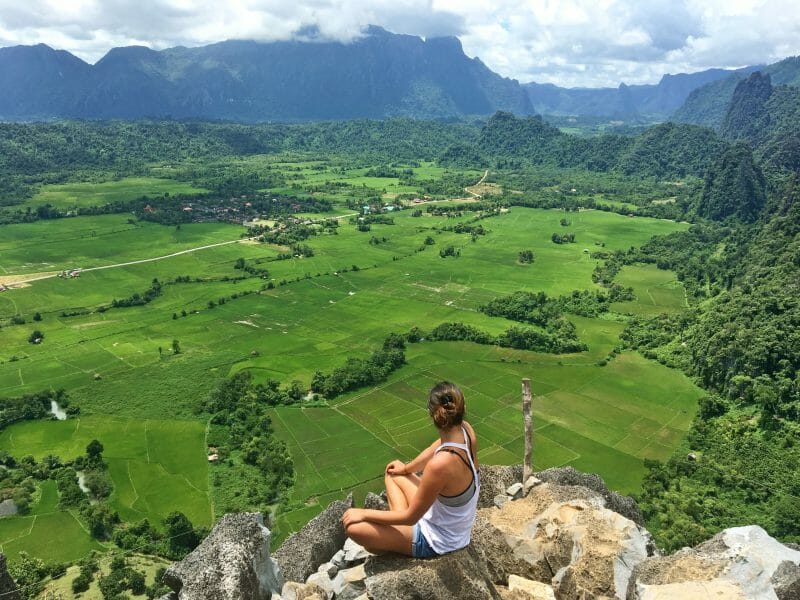
Laos is a warm country in general, with temperatures ranging between 25-35 degrees Celsius (approximately 77-95 Fahrenheit) all year round. If you are visiting the mountainous areas and forest areas you might want to bring a light jacket as it can be slightly cooler.
Safety in Laos

The vast majority of visits to Laos are trouble free, and tourism is a big source of revenue for the country – accounting for approximately 5% of GDP with the potential to grow to 10% according to the World Bank.
Violent crime against foreigners occurs infrequently, but petty crime is not uncommon. You should keep a close eye on your belongings, especially in crowded areas and during busy times of the year like Lao New Year.
There are a number of common scams in Laos: if an offer seems “too good to be true” or overly convenient, it could very well be part of a scam. Common types of petty crime may include: bag snatching, theft from guesthouses and pickpocketing.
In the past, tourists have been scammed by renting scooters or motorbikes only to have them “stolen” back by the owner who then charges them to replace the scooter. You should also never agree to leave your passport with the shop as collateral or deposit.

Scooter and motorcycle accidents are common in Laos. If you are not an experienced scooter/motorcycle driver with the necessary license to ensure that your travel insurance covers you in the event of an accident, I would recommend reconsidering renting a scooter to travel around Laos. Road conditions can be subpar and medical care may not always be easily accessible.
As a solo female traveler in Laos, I also took certain precautions such as booking transportation (including airport or train pick up and drop off) and tours via my hotel and reputable companies.
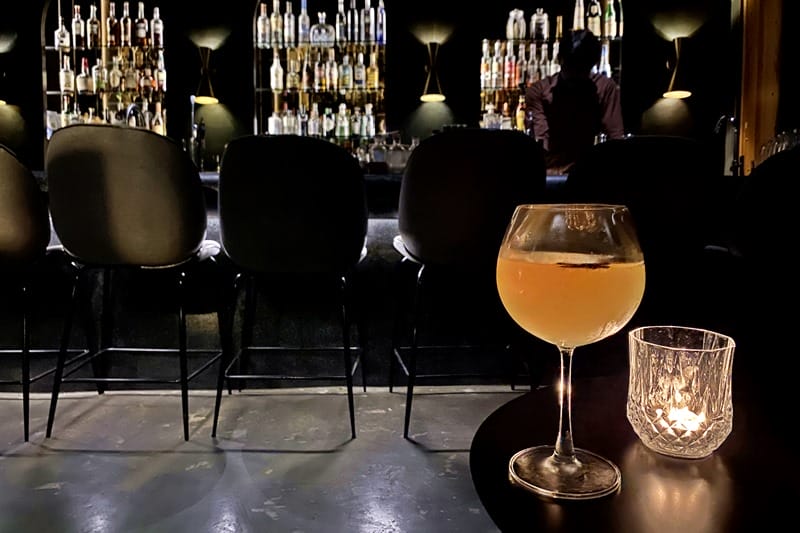
If you are out and about, as you would in any other destination in the world, keep a close eye on your belongings and your drinks to avoid spiking. Most recently, there were multiple fatal cases of methanol poisoning in Vang Vieng.
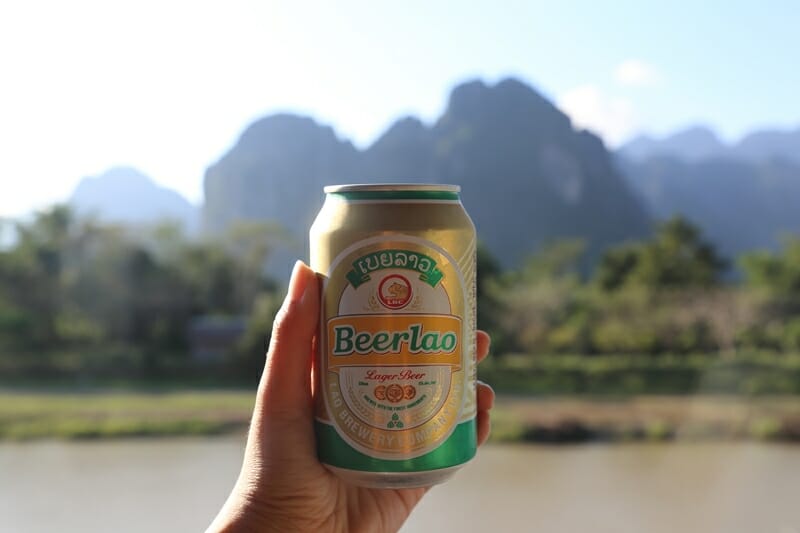
To protect yourself from drink poisoning, SmartTraveller (by the Australian government) recommends that you “consider the risks when drinking alcoholic beverages, be careful drinking cocktails and drinks made with spirits, drink sealed pre-mixed drinks, drink only at reputable licensed premises, avoid home-made alcoholic drinks.“
You should also know that serious accidents and even death have sadly occurred when participating in river tubing while under the influence. Possession of and using drugs in Laos is illegal – so think twice before you order a “happy shake” or “happy pizza”.
Important emergency contact numbers in Laos to be aware of include: 1191 for the police, 1192 for the tourism police and 1623 for an ambulance.
Dos and Don’ts in Laos

It is extremely important to respect local culture and religion, and brush up on your knowledge of do’s and don’ts in Laos. Lao people are generally very laid-back and relaxed, and approximately two thirds of the population are Buddhist.
Here are some important travel tips for visiting Laos: you should never touch a Lao person’s head, don’t point your feet at people or statues or images of the Buddha, and avoid pointing at people with your fingers and hands.

☸️ Buddhist monks are revered and you should avoid physical contact with them, especially if you are a woman. When visiting a Buddhist temple, and dress appropriately when visiting Buddhist temples – this means covered shoulders and knees. You should also be mindful about attending alms giving ceremonies.

📷 In many Buddhist temples there is an inner sanctuary – while you are allowed inside (no shoes, no hats, no sunglasses), you should be aware that no photos are allowed inside the sanctuary. Photos of the sanctuary taken from the outside looking in are also not permitted.

👚 The dress code in Laos is somewhat relaxed, and with the exception of covering your shoulders and knees to enter a temple you can walk around in dresses, shorts and t-shirts. However, in general Lao society is fairly conservative, so I would caution against wearing very revealing or skimpy clothing.
💬 Lao people are generally very friendly, and it goes a long way to greet people by saying “Sabaidee” and to say thank you by saying “khop jai”.
1 week itinerary for Laos

There’s a lot to see and do in Laos, and it’s hard to condense everything within just a few days – this itinerary for Laos won’t cover every square inch of the country, but you’ll get a great first taste of Laos in 7 days.

Read on if you’re wondering how to spend 1 week in Laos! This itinerary not only covers the heritage towns and gilded temples that Laos is famous for, but also the nature attractions and panoramic viewpoints – with time for a hot air balloon ride over Vang Vieng and optional detour to a protected forest reserve outside of Vientiane.
Here is a quick overview of what to expect from this express 1 week Laos itinerary:
- 2 days in Vientiane
- Optional additional 1 night in Nam Pien Yorla Pa in Phou Khao Khouay Biodiversity Conservation National Park
- 2 days in Vang Vieng
- 3 days in Luang Prabang
Note: This itinerary for Lao is also do-able in reverse, depending on whether you are beginning in Luang Prabang or Vientiane! If you have 10 days in Laos or 2 weeks in Laos make sure you check out some tips at the bottom of this article for how to modify this itinerary to better suit your travels.
1. 2 days in Vientiane

This Laos itinerary kicks off in Laos’ most connected city – Vientiane. With international flights arriving into Wattay International Airport, an international border with Nong Khai in Thailand and trains to China and Thailand, Vientiane is the laid-back riverside capital city of Laos.
You could probably see all of the main attractions in Vientiane in 2 days. As the city is fairly compact and easy to get around by car or tuk tuk, you can cover a lot of ground in a short amount of time. Though it is a major city and business hub in Laos, Vientiane still feels slower and more relaxed than other cities in Southeast Asia.
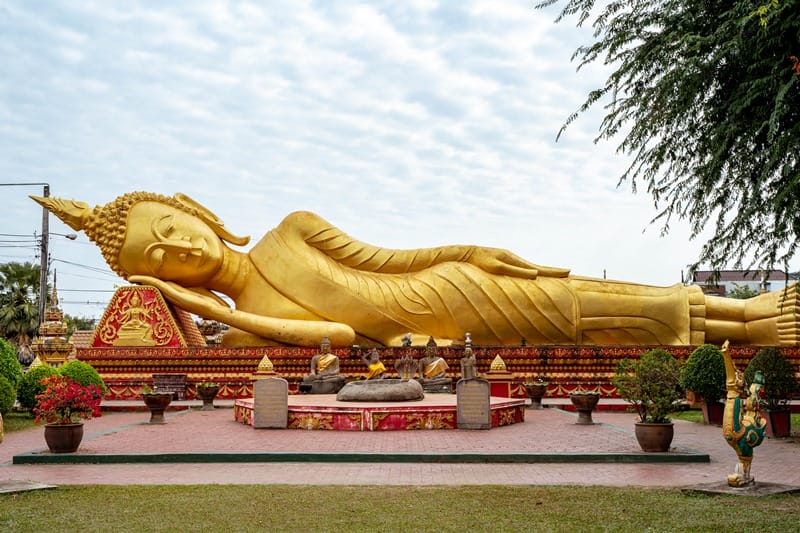
There are a few top attractions in Vientiane not to miss during your brief city stay including Pha Tat Luang, or the That Luang Stupa, a 45-meter tall shimmering stupa that is the national monument and symbol for Laos. Don’t miss the reclining Buddha statue at Wat That Luang Tai close to the stupa itself.
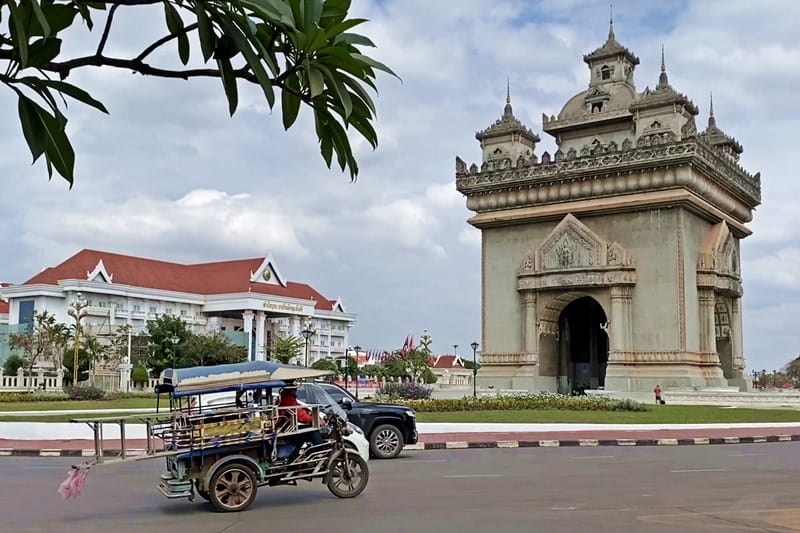
From there, hop on a quick 5-minute Loca car ride (or 35-minute stroll) and head southbound to the Patuxay Victory Monument, a monument built as a symbol of victory in the war of independence against France. You can also climb to the top of Patuxay but it is not a particular tall structure.
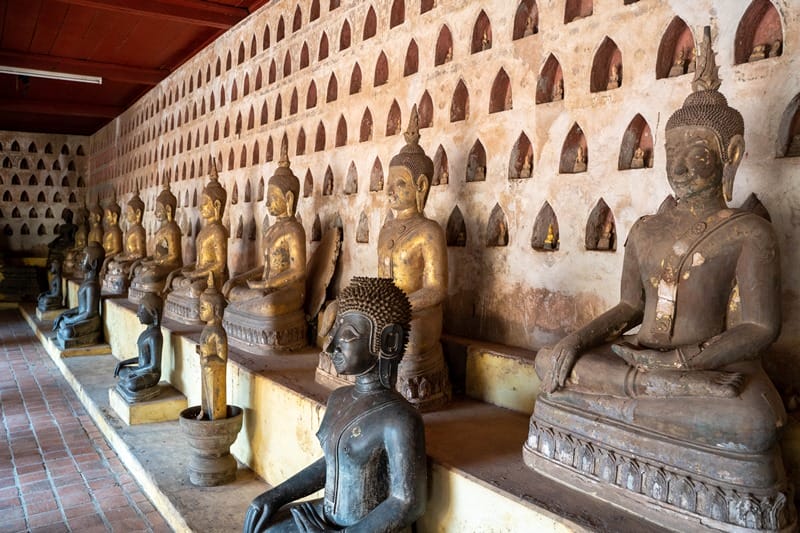
A 15-minute walk from the Patuxay Monument is Wat Sisaket, the oldest surviving temple in the city, as well as Ho Phra Keo museum which was built in 1565.

Wat Si Muang is also a worthwhile stop in the city – it is one of the oldest and most revered temples in Vientiane, dating back to 1563.
Nearby is the COPE Center, a small museum where you can learn the history of unexploded ordnance (UXO) and learn how the dangerous remnants of the Vietnam War has affected life in Laos.
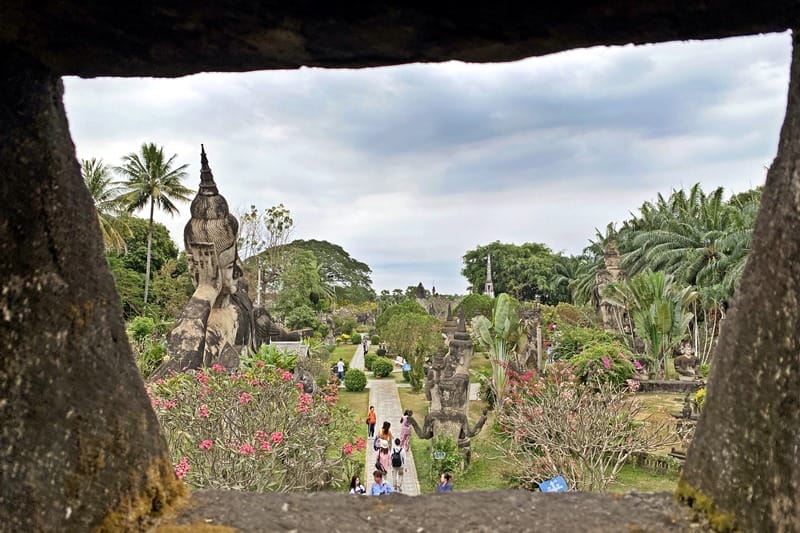
On day 2 in Vientiane, head out for a half day trip to Buddha Park, a weird and wonderful sculpture park built in the 1950s by a monk who studied Buddhism and Hinduism. Located about 30 minutes from Vientiane city by car or an hour by public bus, the park features about 200 Buddha statues, including a massive reclining Buddha.
In your spare time, enjoy the slower pace of life and wander into local temples (there are dozens) filled with vibrant marigold flower offerings and the lingering smell of incense.
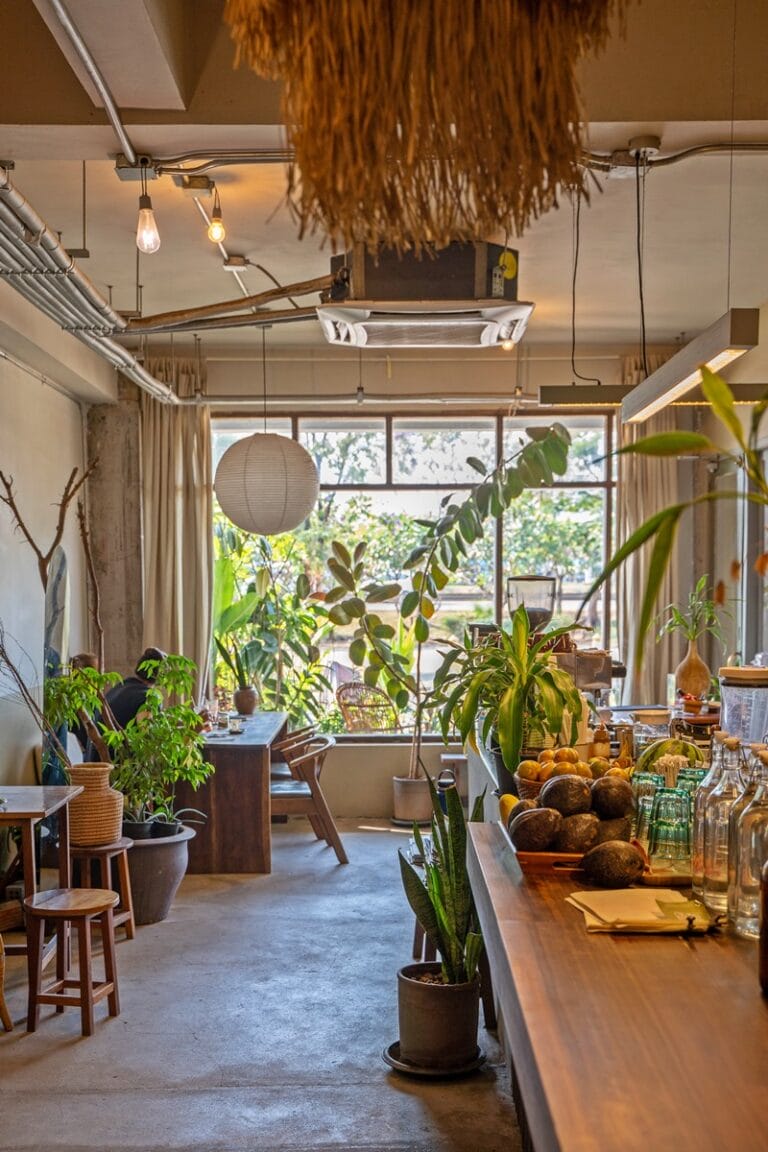
Lovely cafes (complete with killer flat whites) line the streets of downtown Vientiane, and in the evenings head to a rooftop bar before you move onto hidden cocktail bars. Read this destination guide for the best things to do in Vientiane.
Planning your Vientiane trip and not sure where to stay? Green Park Boutique Hotel, La Seine Hotel and Lao Poet Hotel are all highly-rated boutique hotels in the city. They are all centrally-located, are highly-reviewed for the staff hospitality and offer stunning rooms and facilities. You can also click here to see other highly rated hotels in Vientiane!
Optional: 1 night at Nam Pien Yorla Pa
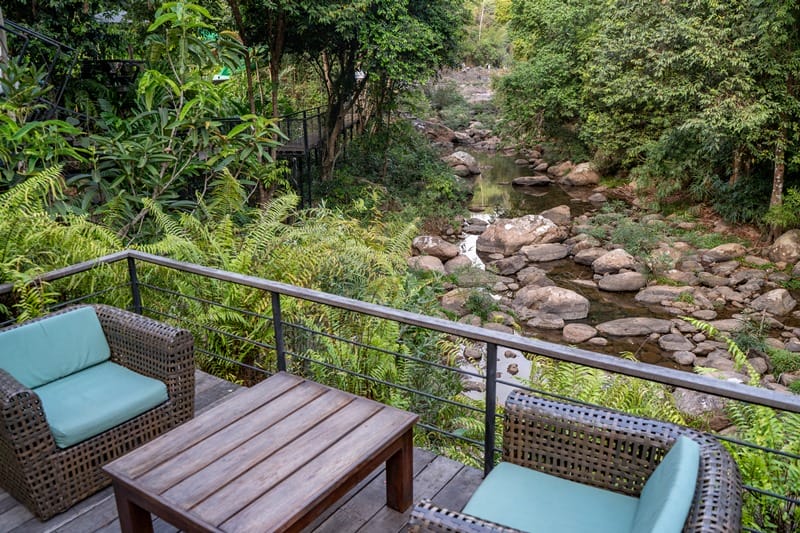
If you are ready to move on from Vientiane after just one day or one and a half days, consider spending your second night at Nam Pien Yorla Pa, located about 2 hours by car from Vientiane city.

Nam Pien Yorla Pa is a boutique eco-resort nestled in a protected forest reserve. With just two dozen rooms, this is where to go if you want to be immersed in nature. I highly recommend the rainforest cabins which have floor-to-ceiling glass windows!
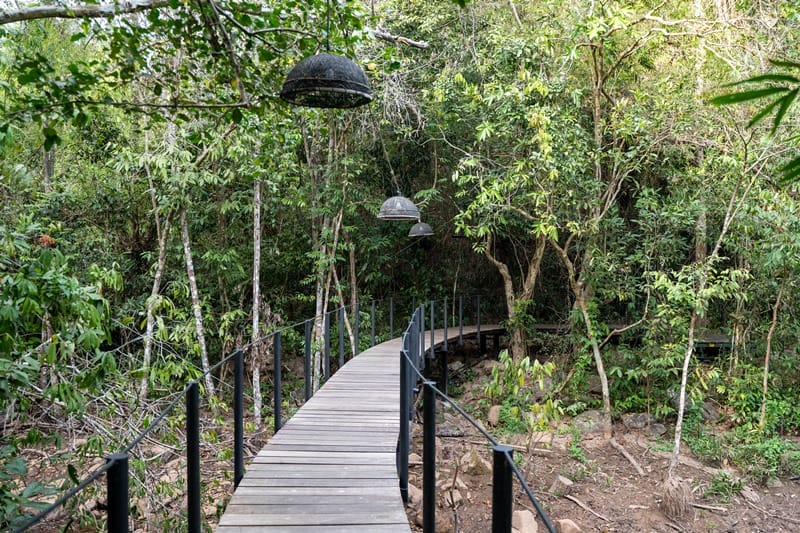
You travel between your cabin and the main restaurant and reception area via suspended canopy walks and elevated walkways, and there are a number of activities on offer including waterfall treks, luge, ATV rides, zip lines and more. Check rates and availability at Nam Pien Yorla Pa here.
A few caveats: in order to take the high speed train to the next destination on this itinerary for Laos (Vang Vieng), you’ll have to double back towards Vientiane (1 hour in a car from Nam Pien Yorla Pa) to go to the Vientiane Railway Station. The station itself is located about 30 minutes outside of Vientiane city.
Secondly, if the weather is very rainy I would give this a miss as it means you won’t be able to participate in most of the activities and excursions such as the waterfall trek, luge, ATV rides or ziplining.

Last but not least, if you or someone in your group has any mobility issues or you are traveling with young children, you may want to reconsider this detour to Nam Pien Yorla Pa, as the hotel is mostly connected by dirt roads and canopy walks or elevated boardwalks. It can therefore be challenging to move between, say your cabin and the main restaurant or the pool, if you are uncomfortable or not able to walk along ropeways like this.
You can call reception and request a buggy to pick you up from your room, but depending on which room you are allocated you may still need to walk from the road to your cabin.

I personally loved my brief stay at Nam Pien Yorla Pa, it was magical to wake up in the rainforest cabin – even if it did rain during our entire stay. If you’re not fussed about visiting the forest reserve then you can also opt to stay put in the city.
2. 2 days in Vang Vieng

Vang Vieng is often known as the adventure capital of Laos – this small town offers tons of exciting activities and excursions, including some of the best hiking trails and viewpoints in Laos, millenia-old caves and picturesque lagoons.
Laos train travel tips: Note that the timings and train codes may change and vary slightly so it is always best to double check the schedule here. Tickets can be purchased 3 days in advance via the official LCR ticket app (requires a local SIM/number) or in person at the train station or from an official LCR ticket office. I’ve found that in Laos it is often easiest to ask your hotel to book tours and purchase train tickets on your behalf, I also had a great experience with Discover Laos Today, a local travel agent.

You can easily get around Vang Vieng town on foot, but if you’re hoping to travel over to the rice paddies, blue lagoons and waterfall then you’ll want to either rent a bicycle or e-scooter, or hire a tuk tuk.
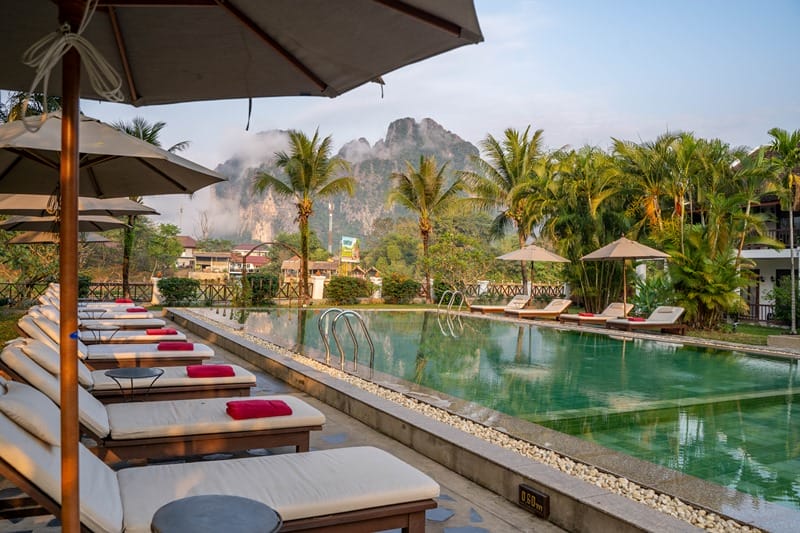
Vang Vieng has transformed over the past few decades. While there is still a part of Vang Vieng that caters to the party-loving crowd, there are lots of incredible higher-end boutique hotels and resorts that offer the killer views that Vang Vieng is also known for.

Spend at least one morning or early afternoon embarking on a viewpoint hike: popular mountains to climb include Phangern (AKA Pha Ngern Silver Cliff viewpoint), Nam Xay and Pha Honekham. You can read more about how to get to these mountains and what to expect on the hikes here.

From there, make a beeline to cool down at one of the emerald toned blue lagoons in Vang Vieng – I am partial to Blue Lagoon 3 and Blue Lagoon 4. You can read more about the various Vang Vieng blue lagoons here.
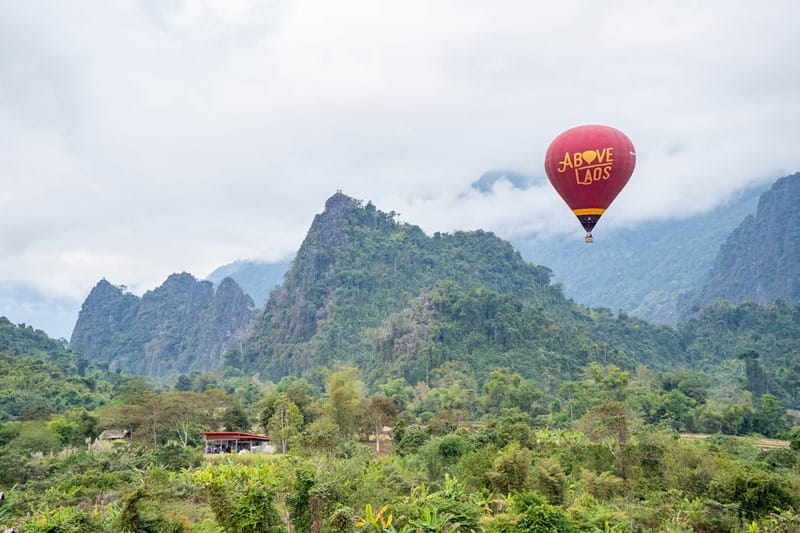
Vang Vieng is also known for being one of the cheapest places in the world to go on a hot air balloon. Hot air ballooning in Vang Vieng costs US$100-150 USD per person for a 30-minute to hour-long ride, and hot air balloons usually operate during the dry season from November to March though additional flights may be possible during the other months depending on weather.

In the evenings, grab a sunset drink at one of the riverside hotel bars overlooking the river and karst mountains, join a yoga class at Yoga in Vang Vieng or take a stroll through the bustling night market. Head here for more ideas on the best things to do in Vang Vieng.
Ready to book your Vang Vieng adventure? I recommend checking out Riverside Boutique Resort for a luxury Vang Vieng stay – the restaurant is fantastic and it is home to one of the best pools in Vang Vieng. You can also check into Inthira Vang Vieng for modern rooms and a pool overlooking the Nam Song river and karst mountains. You might also consider The Silver Naga Hotel next door – it similarly boasts a riverside location and hosts several daily Yoga classes.
3. 3 days in Luang Prabang

Luang Prabang is one of the crown jewels in Laos’ crown and an essential stop on any Laos trip itinerary, especially if it is your first visit.
Luang Prabang is a magical little town in northern Laos that has been designated as a UNESCO Heritage Site for its unique fusion of European and Lao cultural traditions and architecture.

Though Luang Prabang is small with a compact heritage downtown area that is easily explored on foot or bicycle, you should spend a few days soaking in the unique, warm and rich culture and hospitality.

Wander through the Old Town where you will find preserved shophouses and gilded temples featuring ornate Naga (snake) statues and Buddhist Stupas. Some of the major temples that you shouldn’t skip include Wat Xieng Thong, the Buddha’s Footprint Temple on the backside of Mount Phousi, Wat Mahathat and Wat Hua Xiang. Take a break at one of the excellent coffee shops and local restaurants in the area.
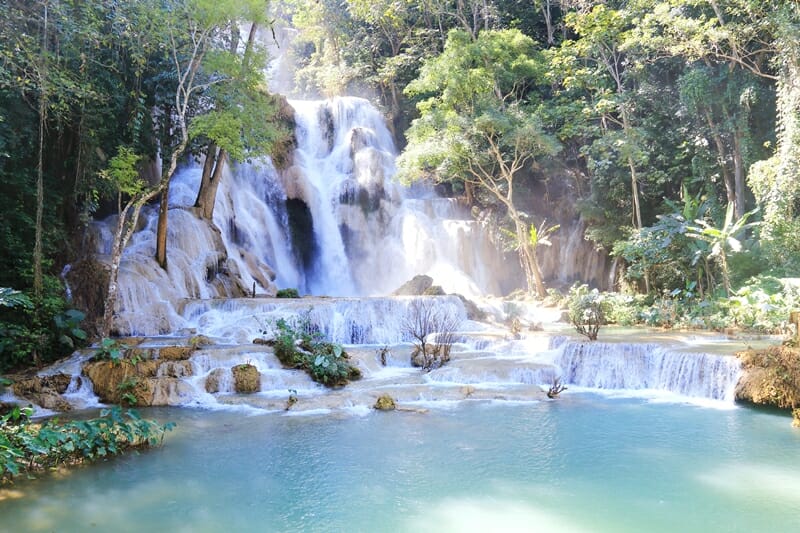
You should also spend a morning or afternoon at Kuang Si Waterfall, one of the best day trips from Luang Prabang. The three-tiered turquoise waterfall is absolutely amazing, and you can swim in several sections of the waterfall.

Have more time? You may also want to visit Tad Sae Waterfall, a smaller but equally stunning cascading waterfall that is only reachable by taking a small longtail boat down the river.

Set aside one morning to meet the elephants at MandaLao Elephant Sanctuary, where you can walk alongside them and interact with them in an ethical manner – this is a no riding and no bathing facility. Read more about MandaLao here.

The alms giving ceremony in Luang Prabang, or Tak Bat, is a longstanding tradition in Laos Buddhist culture and a sacred ceremony for the locals and the monks – it is also one of the most photographed and visited “events” in the country. You might decide to attend and observe the ritual, but before you make that decision, here are 5 things you should think about as well as alms giving do’s and don’ts.
For more ideas on what to do Luang Prabang read this guide.

Ready to book a trip to Luang Prabang? I personally recommend staying at The Namkhan, Maison Dalabua or Moonlight Champa Riverview – all of which are within walking distance or a short tuk tuk ride to Old Town and the night market. Alternatively, you can click here to see other highly rated hotels in Luang Prabang!
Is 1 week in Laos enough time? 2 week Laos itinerary

If it is your first time in the country, you will be able to see a lot and cover a lot of ground in just 7 days in Laos. This express itinerary for Laos will take you to most of the country’s top landmarks and places to visit, but make no mistake about it – there is still so much more on offer beyond these main tourist destinations.
If you only have 5 days in Laos consider shortening your trip by spending 1 day in Vientiane instead of 2 (do-able but won’t leave you much time to relax), and spending 2 days in Luang Prabang instead of 3. Again, not impossible but your schedule will be fairly packed.
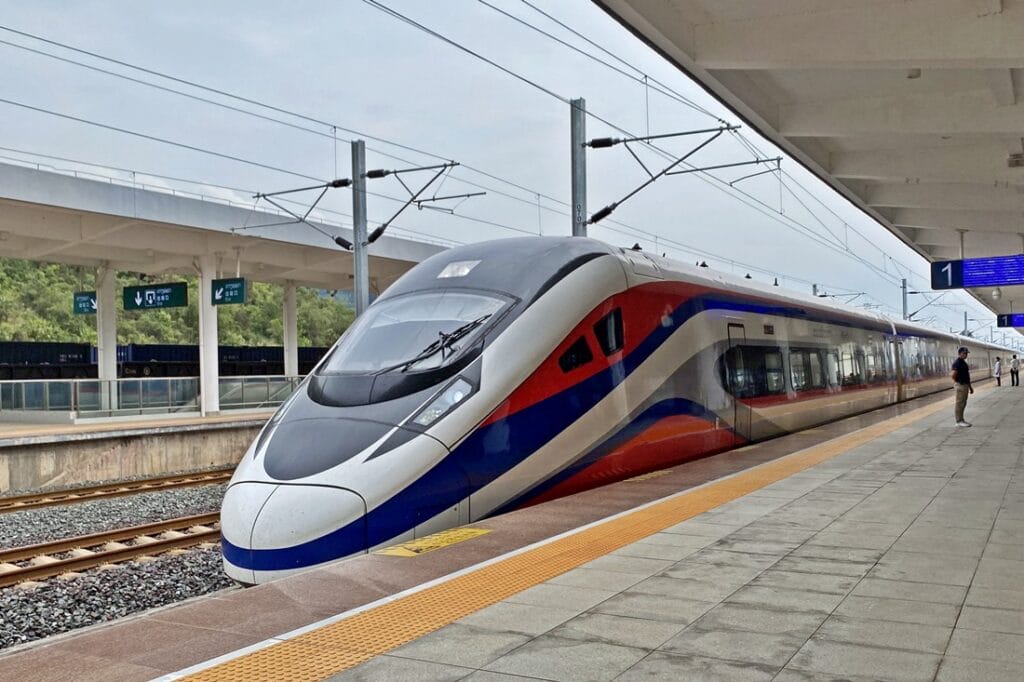
Have more than 1 week in Laos? Lucky you! There are a number of options to extend your Laos holiday and convert it into a longer 10 day Laos itinerary or 2 week itinerary. Here are some ideas:

UNESCO-listed Plain of Jars: The Plain of Jars is one of the most famous places in Laos – it gets its name from more than 2,100 stone jars used for funerary practices in the Iron Age. It is located in Xieng Khouang, about 7-8 hours by car from Luang Prabang, Vang Vieng or Vientiane so you will likely need at least 1 full day and night to visit this landmark.
Unfortunately it is located fairly out of the way so you can’t just conveniently add it as a stop between Vang Vieng and Luang Prabang. There are also direct domestic flights that will take you between Vientiane and Xieng Khouang in just 30 minutes.

Oudomxay and/or Nong Khiaw: Both are located further north of Luang Prabang. Oudomxay is an easy 45 minute train ride away, or drive 3 hours from Luang Prabang to get to Nong Khiaw. Both are smaller towns that each offer a number of activities and the opportunity to visit local villages and hill tribes.
Oudomxay is home to the Chom Ong Cave and stunning Nam Kat Waterfall – it is a popular stop for those traveling onwards to Luang Namtha and Phongsaly.
Nong Khiaw is nestled in the mountains and home to one of the best viewpoints in Laos – Pha Daeng Peak. You can also hop on river cruises to visit local villages or explore caves.

Khammouane Thakek Loop: A 3-4 day journey beginning in Thakek, a 4-5 hour drive from Vientiane. This Laos itinerary add-on is best suited to adventure-loving independent travelers who want to get off the beaten track. Most people rent a motorcycle in order to drive the 450 KM loop that will take you through karst mountains, rice fields and caves. There is also a new viewpoint, The Rock, that opened in recent years. Read more here and here.
If you have 2 weeks in Laos then most people venture south towards Pakse, Champasak, the 4000 Islands and the waterfall-laden Bolaven Plateau.

The main gateway into southern Laos is via Pakse, which is accessible by domestic flights from Vientiane and Luang Prabang – which means it doesn’t matter which direction you follow the 1-week Laos itinerary above, you can hop on a flight to begin the southern leg of your second week.

Pakse and Champasak: Pakse is best known for its charming Indochinese downtown, sprawling Dao Heuang Market and Wat Phou Salao – a giant Buddha on the hill opposite town. Most people stay here for 1 night and visit the 12th century UNESCO World Heritage Site, Wat Phou (a Khmer temple built on a hillside), in nearby Champasak – or vice versa. It is a 45-minute drive from Pakse proper.
4000 Islands: This archipelago is a popular destination for backpackers who love the laid-back, tranquil environment. It is also home to two of Laos’ most striking waterfalls, Khone Phapheng falls and Tad Somphamit. There are three main tourist islands – most people recommend staying 2-3 days if visiting all three. Get there by car and then a short boat ride: it is a 2-3 hour drive from Pakse or 1.5 hours from Champasak.

Bolaven Plateau: One of my personal bucket-list destinations (planning to go when my toddler gets a bit older), the Bolaven Plateau is home to some of the most stunning waterfalls in Laos including Tad Fane, Tad Yeuang and Tad Lo. The plateau is also filled with coffee plantations – most people go on Jeep/4WD tours that take them around the mountain loop to various waterfalls and cafes. 2-3 days minimum is generally recommended for visiting the Bolaven Plateau, and can be reached via a 1-hour drive from Pakse.

I hope this guide helps you to make the most of your time in Laos, and gives you some ideas on how to tour the country to experience what it has to offer!
You may also enjoy these reads:
- If you are planning to spend a few days in Vientiane during your time in Laos, check out my guide on what to see and do in Vientiane here
- Looking for your next Laos destination? Luang Prabang is a UNESCO-listed heritage town in northern Laos. Here is my guide to the top things to do in Luang Prabang and what you might want to give a miss
- Vang Vieng is a haven for adventure lovers – it’s also one of the best places to try hot air ballooning in the world. Here is my guide to exploring Vang Vieng and tips on which Vang Vieng blue lagoon to visit
- Traveling around Laos has been made easier with the addition of the new railway system. Read more about traveling by high speed train in Laos here
- Want even more travel tips on visiting Laos? Head on over here!
- Looking for more Southeast Asia travel tips? Click here for 10 things you should know before you visit Southeast Asia
Liked this post? Pin it for later!


I have traveled to Laos independently in the past, for my most recent trip in early 2024 I was hosted by Tourism Laos and ASEAN to participate in the ASEAN Tourism Forum in Vientiane, and I was also a media guest at Nam Pien Yorla Pa, The Namkhan and Inthira Vang Vieng. However, no compensation was received for this article, and as always, the opinions on Yogawinetravel.com are (and always will be) my own!
This post contains affiliate links. If you choose to book using these links, I will earn a small commission at no extra cost to you. Thank you for supporting my website by using these links.
Enjoyed reading this article? Subscribe to the mailing list!
* Unsubscribe at any time. Your e-mail address will only ever be used to send the occasional Yoga, Wine & Travel newsletter.








